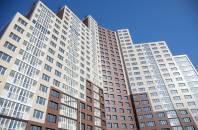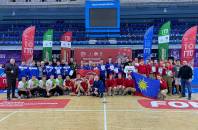|
Региональный журнал для деловых кругов Дальнего Востока
|
|
||||||||||||||||||||||
|
Среда| 05 Ноября, 10:54 |
|
|
Тема номера
|
|||||||||||||||||||||

 Олег Кожемяко осуществил новогодние желания маленьких приморцев
В преддверии новогодних праздников заветные желания маленьких приморцев начинают сбываться. Так, Губернатор Приморского края Олег Кожемяко передал подарки от Деда Мороза двум маленьким приморцам: шестилетнему Мирону Глушаку из Тернейского муниципального округа и четырёхлетней Ольге Алимпиевой из Арсеньева.
Олег Кожемяко осуществил новогодние желания маленьких приморцев
В преддверии новогодних праздников заветные желания маленьких приморцев начинают сбываться. Так, Губернатор Приморского края Олег Кожемяко передал подарки от Деда Мороза двум маленьким приморцам: шестилетнему Мирону Глушаку из Тернейского муниципального округа и четырёхлетней Ольге Алимпиевой из Арсеньева.
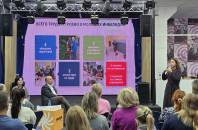 Родители ребят с ОВЗ обсудили вопросы образования и трудоустройства с представителями власти Приморья
Третья встреча клуба "На равных", призванного помогать гражданам решить непростые жизненные ситуации, состоялась в Приморье. В этот день участниками клуба стали родители детей с инвалидностью и ограниченными возможностями здоровья. Они обсудили с представителями власти вопросы образования и трудоустройства таких ребят.
Родители ребят с ОВЗ обсудили вопросы образования и трудоустройства с представителями власти Приморья
Третья встреча клуба "На равных", призванного помогать гражданам решить непростые жизненные ситуации, состоялась в Приморье. В этот день участниками клуба стали родители детей с инвалидностью и ограниченными возможностями здоровья. Они обсудили с представителями власти вопросы образования и трудоустройства таких ребят.
 Социальные предприниматели Приморья могут найти кадры и получить рекламу на радио при господдержке
Открыт прием заявок на две актуальные для социальных предпринимателей меры поддержки: "Размещение двух вакансий на HeadHunter" и "Размещение рекламы на радиостанции". Такой формат господдержки поможет социальному бизнесу Приморья продвигать свои услуги в осенний период и найти профессиональные кадры для расширения штата.
Социальные предприниматели Приморья могут найти кадры и получить рекламу на радио при господдержке
Открыт прием заявок на две актуальные для социальных предпринимателей меры поддержки: "Размещение двух вакансий на HeadHunter" и "Размещение рекламы на радиостанции". Такой формат господдержки поможет социальному бизнесу Приморья продвигать свои услуги в осенний период и найти профессиональные кадры для расширения штата.
 24 протокола составили на нарушителей противопожарного режима в приморских лесах
Лесничие и инспекторы в Приморье составили 24 протокола в отношении нарушителей особого противопожарного режима на землях лесного фонда. ОПР действует в большинстве муниципалитетов и подразумевает крупные штрафы за пренебрежение правилами пожарной безопасности.
24 протокола составили на нарушителей противопожарного режима в приморских лесах
Лесничие и инспекторы в Приморье составили 24 протокола в отношении нарушителей особого противопожарного режима на землях лесного фонда. ОПР действует в большинстве муниципалитетов и подразумевает крупные штрафы за пренебрежение правилами пожарной безопасности.
Modernizing the economy is the key to development
“Victor Ivanovich, the Russian Far East is the key link for Russia’s integration in the Asia-Pacific Region. This is how the federal government is positioning the RFE, how it defines its role. Do you think this mission can be fulfilled?
“How could it be otherwise? What other region could be Russia’s gate to Asia-Pacific? It has to be the RFE, because this is the contact zone. Our regions are already engaged in active trade with the APR. In 1990, 75% of RFE output was sold domestically; today it’s just 21%.
“What sectors of the RFE economy are most closely integrated with APEC economies?”
“Unfortunately, the RFE economy is heavily focused on resource exports. We ship hydrocarbons, round logs and raw fish to Asia-Pacific markets. Many international companies are active in the RFE mining sector, but their main concern is an uninterrupted supply of mineral resources.
“This is clear from the breakdown of foreign investment in the RFE. Investment has been expanding at a healthy rate, jumping from USD 0.5 billion to USD 9.9 billion in 2000-2011. Last year, Russia’s Far Eastern Federal District ranked fourth by foreign investment among the country’s eight federal districts. In terms of per-capita foreign investment (USD 1,576 in 2011), the region is second nationwide, trailing only the Central Federal District. However, 93% or nearly USD 9.3 billion of foreign investment went into resource extraction.
“What can I say about this? Yes, the RFE is rich in natural resources, but we see its further development mainly in modernization of the economy. The share of processing companies and innovative production facilities in the RFE is constantly growing, but we must accelerate this process. The RFE has to find a new niche in the global division of labor.
“In fact, the situation on the global market does open up new opportunities. For example, the appeal of agriculture for international investment is growing. I am positive that in a few years, the world, whose population has already reached 7 billion, will face a shortage of food. The RFE has everything needed to develop animal husbandry and vegetable farming, and we can also develop our meat and milk production. We can feed ourselves while also providing exports.
“The time has come to change the structure of the economy and move from resource extraction to deep processing of high value-added products; we need to develop our timber and lumber industry, fishing, and other sectors having underutilized potential. The government has plans for this transition, and its implementation has already begun.”
“How can we change things? A lot is being said these days about the need for special conditions for the RFE, for special tax and tariff regimes and other types of preferred treatment. What does this mean exactly, and would these fit with the market economy we have been building in Russia the 20 years?”
“We have to create suitable conditions for foreign as well as domestic investors. This objective has many different aspects, but we should begin by developing our transportation, power and social infrastructure, making active use of public-private partnerships. The government is creating these conditions, and the private sector needs to organize efficient production, creating focal points of growth.
“The RFE is a vast area, so to encourage the private sector to come here, we have to condense time and distance. We already have examples of this, and we are going to expand this practice going forward; for instance, the government reduced railroad charges significantly for transportation of the cargo types most important for the RFE, because transportation costs are a very significant component of the cost of goods. Additionally, electricity prices should be reduced to the Russian average. The government is perfectly capable of waiving customs tariffs for companies and organizations in the RFE, especially the tariffs on value-added products that undergo deep processing.
“This would involve special operating conditions for new companies, including an 80% reduction of all taxes except for the personal income tax they withhold. It is companies who increase the region’s tax base, one way or another. Tax breaks and preferred treatment would allow them to reduce projected breakeven times and help make their business more viable. We have to make sure that our companies are competitive both domestically and internationally. This was how Alaska developed, and free economic zones in China and other Asian countries also gave a powerful impetus to development of regional economies. We can draw upon their experience and make more active use of development mechanisms that have proved successful elsewhere.”
“You have cited numbers reflecting the RFE’s expected investment demand several times recently: RUB 3 trillion through 2014, and RUB 9 trillion through 2025. Are these hypothetical estimates? What are they based on, and what has to happen for these forecasts to come true?”
“The government has specific plans for developing the RFE, mostly through implementation of mega-projects. Some of them focus on the fuel and energy sector, including continued development of Sakhalin oil and gas projects at a cost of over RUB 1.8 trillion. Development will continue at the Kovykta and Chayandin gas fields. Construction is beginning on a gas pipeline from East Siberia and Yakutia that will be linked to the Sakhalin-Khabarovsk-Vladivostok pipeline. Chemical production facilities using natural gas will likely be built along the pipeline route. Required investment in the main pipeline system is estimated at RUB 675 billion. A large-scale petro- and natural gas chemical industry is expected to develop in the RFE to include methanol, ammonia and fertilizer producers, as well as manufacturers of polymeric plastics and more.
“Approximately RUB 300 billion will be invested in exploration and setting up mineral processing companies in the mining sector. We have high hopes for continued development of gold deposits in the Amur and Magadan regions and the Chukotka Autonomous Region, as well as for the Elga Coal Field in Yakutia, and iron ore deposits in the Amur and Jewish Autonomous regions. A metal producing cluster is taking shape along the Amur River, with total project cost estimated at more than RUB 100 billion.
“A large share of investments will go to infrastructure projects. Increasing the throughput capacity of the Baikal-Amur Mainline Railway (BAM) in parallel with the expansion of throughput at RFE ports is essential. Development of the areas adjacent to the BAM will enable us to engage additional resources in growth and create a new belt of economic expansion in Eastern Russia.
“Experts forecast that, including ongoing and planned investment projects, and given the needs of major cargo shippers, the total annual amount of cargo carried along the BAM should be around 52 million tons by 2015, increasing to 100 million by 2030. The BAM’s current throughput capacity is only 12.5 million tons, so we are looking at some very significant growth. If we don’t build BAM 2, we won’t see growth from major coal miners, because they won’t be able to deliver their output to markets - and we’re talking about 70 million tons per year in the future.
“We need to implement substantial projects to build highways and expand air transportation. It is also important to realize that there will be no growth without expanded utilities and energy infrastructure. That is the reason new power plants are being built, and we are also developing natural gas supplies and transitioning to new types of fuel.
“The RFE is also home to innovative, high-tech projects that envisage cooperation with Asia-Pacific countries. Vostochny Space Port is one such project. A facility to produce liquefied hydrogen will be built to supply the boosters, and there will be engineering companies serving the space port, as well as a new airport to support the supply chain. The total cost of the project is estimated at RUB 251 billion. This would entail very substantial modernization for defense manufacturers.
“These are real projects, most with detailed plans; some are already under way, and they should give a strong boost to RFE development. The Russian President supports our efforts and has set targets, lifting our efforts to the plane of specific projects.”
“We are now trying to look beyond 2025, and work is under way on a Development Strategy and Program covering the period through 2050. How realistic is this kind of planning horizon, given the lack of global and domestic economic stability?”
“Yes, European markets have practically collapsed, and many sectors are looking at Eastern markets as their main hope. APEC’s 21 Asia-Pacific member countries account for 57% of global domestic product and 48% of the world’s international trade, more than 40% of direct foreign investment, and around 40% of the world’s population.
“As for the economic crisis, I’d like to note that RFE regions are the only ones in Russia to weather the most recent crisis with positive social and economic growth.
“These days, when evaluating the labor situation, we note the sharp decline in unemployment in the RFE, due in part to the overall decline in population, but also due to new production facilities in most RFE regions. Nearly 1,000 people are now working at the Vostochny Space Port construction site in the Amur Region, and roughly as many are involved in construction of the Kimkan-Sutarsky ore refinery in the Jewish Autonomous Region. Tens of thousands of people from companies in a number of Russian regions have been involved in construction projects associated with the APEC Summit in Vladivostok.
“Thinking ahead, we are planning to ensure above-average economic and social growth in the RFE compared to the rest of the country. We expect the RFE’s gross regional product to increase at least by 8%-10% per annum, which would boost the Russian economy as a whole.
“Our list of tasks includes developing the regional consumer market, increasing people’s purchasing power, and manufacturing our own products to replace imports. Demography is a key challenge. According to the 2002 census, the RFE had 6,440,000 residents, but the population contracted to 6,285,000 by 2010. We intend to reverse this trend and achieve net population growth of 511,000 by 2025, with 80% of the total increase represented by educated, skilled people - this is an absolutely essential condition for our continued growth.”
Yevgeny ETAROV
- Дальневосточный фокус. Как делать бизнес на Дальнем Востоке?
- Дрейф в штиль. Куда идет дальневосточный бизнес
- Акцент на береговую зону
- "РЖД" берет повышенный план
- Банки сняли отраслевые барьеры малому бизнесу на Дальнем Востоке
- Рейтинг 100 крупнейших компаний Дальнего Востока по выручке и темпам роста показывает реальные дела
- Рецепты выживания: Рейтинг эффективности бизнеса 100 крупнейших компаний Дальнего Востока
- По "Улице Дальнего Востока" с любопытством и восторгом
- Проект "Приморский маршрут": Приморский край: есть чем впечатлиться
- ТОП крупнейших компаний Дальнего Востока расширился до 150
 #ПозывнойКультура: Дед Мороз поздравил участников СВО в госпитале ТОФ с наступающим Новым годом
В преддверии Нового года агитбригада #ПозывнойКультура побывала в госпитале Тихоокеанского флота в субботу, 28 декабря. Для участников СВО, находящихся на лечении и реабилитации, прозвучали музыкальные поздравления. Со словами самых теплых пожеланий подарки военнослужащим вручила заместитель Председателя Правительства Приморского края – министр культуры и архивного дела Елена Бронникова.
#ПозывнойКультура: Дед Мороз поздравил участников СВО в госпитале ТОФ с наступающим Новым годом
В преддверии Нового года агитбригада #ПозывнойКультура побывала в госпитале Тихоокеанского флота в субботу, 28 декабря. Для участников СВО, находящихся на лечении и реабилитации, прозвучали музыкальные поздравления. Со словами самых теплых пожеланий подарки военнослужащим вручила заместитель Председателя Правительства Приморского края – министр культуры и архивного дела Елена Бронникова.
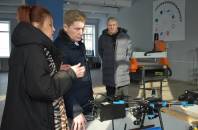 Губернатор Приморья оценил оснащение Индустриального колледжа в Арсеньеве
Очередной день работы Губернатора Приморского края Олега Кожемяко в муниципалитетах региона начался с посещения Приморского индустриального колледжа в Арсеньеве. Глава региона изучил новое оборудование, на котором готовят специалистов технических специальностей.
Губернатор Приморья оценил оснащение Индустриального колледжа в Арсеньеве
Очередной день работы Губернатора Приморского края Олега Кожемяко в муниципалитетах региона начался с посещения Приморского индустриального колледжа в Арсеньеве. Глава региона изучил новое оборудование, на котором готовят специалистов технических специальностей.
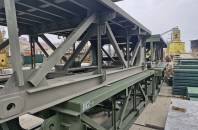 Комплекты быстровозводимых мостов начали поставлять в Приморье
Началась поставка средних автодорожных разборных мостов (САРМ) для проведения аварийно-восстановительных работ на дорогах Приморья. Всего на следующий год закуплено 11 комплектов. При необходимости комплекты САРМ будут использованы для оперативного восстановления проездов во время паводков.
Комплекты быстровозводимых мостов начали поставлять в Приморье
Началась поставка средних автодорожных разборных мостов (САРМ) для проведения аварийно-восстановительных работ на дорогах Приморья. Всего на следующий год закуплено 11 комплектов. При необходимости комплекты САРМ будут использованы для оперативного восстановления проездов во время паводков.
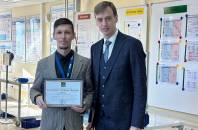 Почти 900 сотрудников предприятий Приморья уже владеют бережливыми технологиями благодаря нацпроекту "Производительность труда"
Итоги реализации национального проекта "Производительность труда" и планы на будущее озвучил министр экономического развития Приморья Андрей Блохин на награждении команды Регионального центра компетенций. За четыре года работы нацпроекта реализовано 78 проектов по внедрению бережливых технологий на предприятиях края.
Почти 900 сотрудников предприятий Приморья уже владеют бережливыми технологиями благодаря нацпроекту "Производительность труда"
Итоги реализации национального проекта "Производительность труда" и планы на будущее озвучил министр экономического развития Приморья Андрей Блохин на награждении команды Регионального центра компетенций. За четыре года работы нацпроекта реализовано 78 проектов по внедрению бережливых технологий на предприятиях края.
